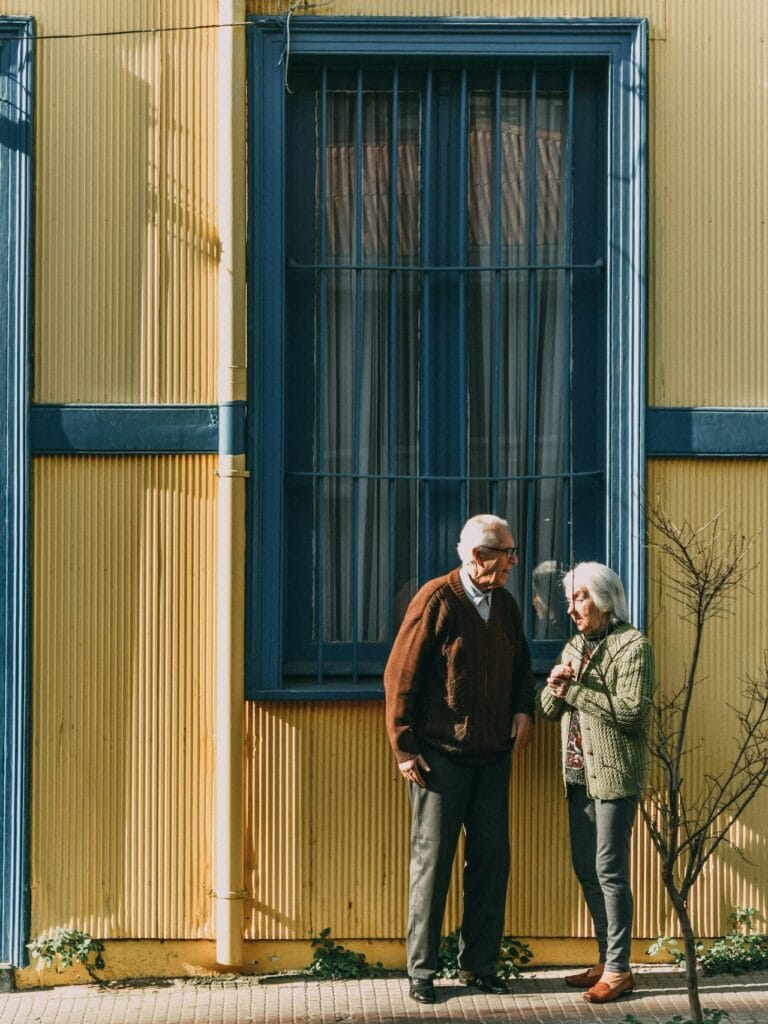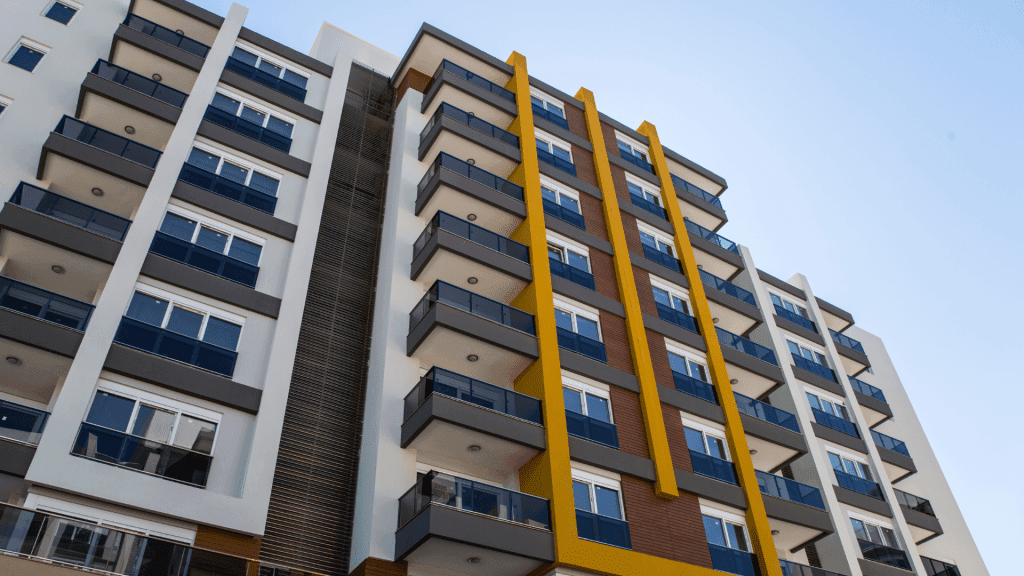Valuation of senior living developments
Do you need advice for your projects?
The aging of the population is a reality that comes with new challenges and opportunities in real estate and services. Senior Living – a concept that combines housing, basic care services and operational exploitation –has emerged as a hybrid asset with great potential for profitability and the generation of social value. Given this complexity, the valuation of Senior Living developments becomes a strategic necessity: it is not enough to estimate the price per square meter or the cost of construction, but it is necessary to integrate operational, service and demand factors to obtain a rigorous report.

What is senior living and why value it professionally?
Senior living is a residential model specially designed for people over 65 years of age, most of whom are autonomous, who wish to enjoy a safe, comfortable environment with integrated services. Unlike traditional nursing homes, Senior Living focuses on independence, socialization and quality of life: residents have self-catering apartments or studios, adapted bathrooms and common areas for leisure activities, restaurants and physiotherapy, without reaching the level of intensive care required by social-health centers.
Its professional valuation requires a mixed approach. First, the real estate aspect requires a study of the land, construction costs, architectural design, urban planning regulations and the market price depending on the location. Secondly, the operational-care analysis must consider rates, staff and supply costs, occupancy forecast, average length of stay, operating margins and licensing requirements. Finally, the financial component is based on cash flow projections (DCF), internal rate of return (IRR) and sensitivity to variations in occupancy or prices, while the legal and regulatory component requires compliance with regional health and social services regulations, as well as safety and accessibility obligations. Only a report that combines these perspectives offers a quality assessment, useful for developers, investors, financial institutions and specialized operators.
Difference compared to nursing homes
Elderly people with some degree of dependency and the need for continuous health care predominate in nursing homes. For this reason, they usually have nursing, treatment rooms and 24-hour care, as well as agreements with hospitals, and their business model is based on long-stay rates that include medical services. The value of the asset is mainly anchored to the bed fee or cost per bed, usually through rental or management assignment to a social-healthcare operator.
On the other hand, Senior Living caters to an independent profile, offering catering services, cleaning, different entertainment offers, but without medical care. Its business model combines the rental of apartments with the sale of optional service packs, and its valuation must incorporate the commercial capacity of the asset: attracting the public, building loyalty and applying dynamic prices.
Operating asset with business model
A Senior Living project is not only valued for its physical characteristics, but also for its capacity to generate regular income. Among the main operating indicators, the following stand out:
The average income per unit, which reflects the average monthly rate per apartment or day stay;
The occupancy rate, where values above 90% are considered optimal;
Average length of stay, which impacts both switching costs and recurring revenues;
Operating costs, which include support staff, maintenance, supplies, insurance and marketing;
And the gross operating margin (GOP), which measures the difference between total revenues and direct operating costs.
A comprehensive valuation models these parameters in a discounted cash flow (DCF) and complements them with comparative market and replacement cost methods.
Factors influencing the valuation of senior living developments
When analyzing a Senior Living development, it is important to break down the key key factors that determine its investment attractiveness and market price:
Location and urban environment
Location is critical; the best projects are located in peri-urban environments or on the outskirts of cities that guarantee access to healthcare services, with proximity to hospitals, clinics and health centers; public transportation, with bus, subway or train connections to facilitate the mobility of residents and visitors; green and recreational areas, such as parks, promenades and open spaces that promote physical and mental health; and retail and leisure options, including supermarkets, pharmacies, cafeterias and cultural centers. A complete environment reduces the need for travel and enhances users’ perception of value, enabling higher rates to be charged.
Type of units and services included
In a project ofsenior living, the type of units and the services included are determinant for both resident satisfaction and commercial viability, always emphasizing total user independence. First of all, the number and type of apartments must be adapted to different needs: some users prefer a more compact and simple unit, while others appreciate having a larger apartment with several rooms.
In addition to the private units, the common areas play an essential role: such as the gastroteca or multipurpose room where they can socialize, read and carry out group activities. The presence of a restaurant service, either with its own restaurant or a la carte catering service, covers those who prefer not to cook and are also looking for a good table. On the other hand, having a space dedicated to gymnasium, physiotherapy or rehabilitation with specific equipment and specialized personnel.
User occupancy and turnover
In theseniorliving, maintain a high and stable occupancy-ideally above 90%-is essential to guarantee constant revenues and amortize fixed costs such as personnel and facilities. Forecasting future demand, taking into account population aging and public subsidies, allows for timely planning of expansions and appropriate tariff adjustments.
The average length of stay determines the level of turnover: long stays (over 18-24 months) reduce the costs of frequent cleaning, room adaptations and discharge procedures, while promoting resident loyalty and well-being. On the other hand, short stays (1 to 6 months, for example, during convalescence) increase turnover, generating more annual income, but also additional expenses for temporary staff and space maintenance.
Finding a balance between short- and long-stay places helps to optimize the revenue/expense ratio and create a more stable environment. When occupancy exceeds 95 In addition, planning human resources according to turnover profile-with stable teams for long stays and flexible staff for temporary stays-improves operational efficiency and service quality. Likewise, planning human resources according to the rotation profile-with stable teams for long stays and flexible personnel for temporary stays-improves operational efficiency and service quality.
Monthly rate and operating margins
The price per square or apartment marks the capacity to generate cash flow. In addition to the base rate, which corresponds to the rental or assignment of use per unit, optional services (catering, personalized assistance and activities) and operating costs (personnel, supplies, marketing, insurance and depreciation of fixed assets) must be taken into account. The gross operating margin (GOP), which relates direct revenues to direct costs, is essential for valuation using rental capitalization methods.
Direct management or with a specialized operator
Having an agreement with an established operator brings investor confidence, economies of scale in supply, personnel and marketing, reputation and stability through long-term contracts with penalties for non-compliance and annual tariff adjustments. A project managed by a first-tier operator is usually valued at a lower discount (i.e., higher valuation) than a self-managed project.
At what stages can a senior living development be assessed?
The valuation varies according to the stage of the project. Each stage requires complementary methodologies:
Planning phase
In this early stage, a feasibility study is conducted that analyzes demand, competition and prices; future cash flows are projected based on occupancy and tariff assumptions; the cost method is used to estimate the necessary investment in land and construction; and the DCF is used to calculate the expected IRR. The objective is to validate the potential profitability before committing capital.
Construction or renovation phase
With the project under construction, the urbanized land and the work executed to date are valued, the expected cash flows are adjusted according to the investment schedule, the risk of cost overruns is calculated, and IRR and NPV are updated based on the construction milestones. Cost control and benchmarking of similar projects are essential.
Active in operation
Once operational, the valuation is based on actual data: revenues actually collected month by month, operating expenses recorded (including seasonal variations), net profitability after taxes and depreciation, and comparative analysis with recent operations. At this stage, the net income capitalization method and DCF adjusted with actual data provide the most reliable estimate.
Discover our valuation services
Tecnitasa Group offers valuations of all types of assets. Its expert team applies specific criteria for each type of asset, adapting to the particular needs of clients. Explore the available sub-services, each valuation is tailored to the characteristics of the asset.
Latest news on valuation
Check our blog for up-to-date news and specialized articles on the valuation industry. We offer information on trends, market changes, regulations and advice for owners and investors in this segment.
With over 40 years of experience in valuations of all types of assets, we offer reports recognized by financial institutions and investment funds, certified methodologies, customized analysis according to the state of the asset, the stage of the project and the expectations of investors, and comprehensive care: from Technical Due Diligence to financial viability projections. Contact our experts and receive a detailed quotation in less than 24 hours. hours.
Frequently asked questions about senior living
What is the difference between a nursing home and senior living?
Senior living is aimed at independent seniors, with catering services, entertainment and services, but without intensive medical care. Senior living homes offer continuous social and health care and nursing staff.
What documentation do I need to value a senior living?
In order to evaluate a senior living facility, it is essential to have the project plans, the sales or rental rates, the business plan, the occupancy history or, if applicable, its forecast, the operating expense budget and, if available, the contracts with operators.
Can a project be valued before it is built?
Yes, through market feasibility studies, cash flow projections (DCF), replacement cost analysis and market comparables.
What factors increase the value of senior living?
Factors that increase their value include strategic location, high and stable occupancy, management by a recognized operator, quality and variety of services offered, operational efficiency and technology integration.
